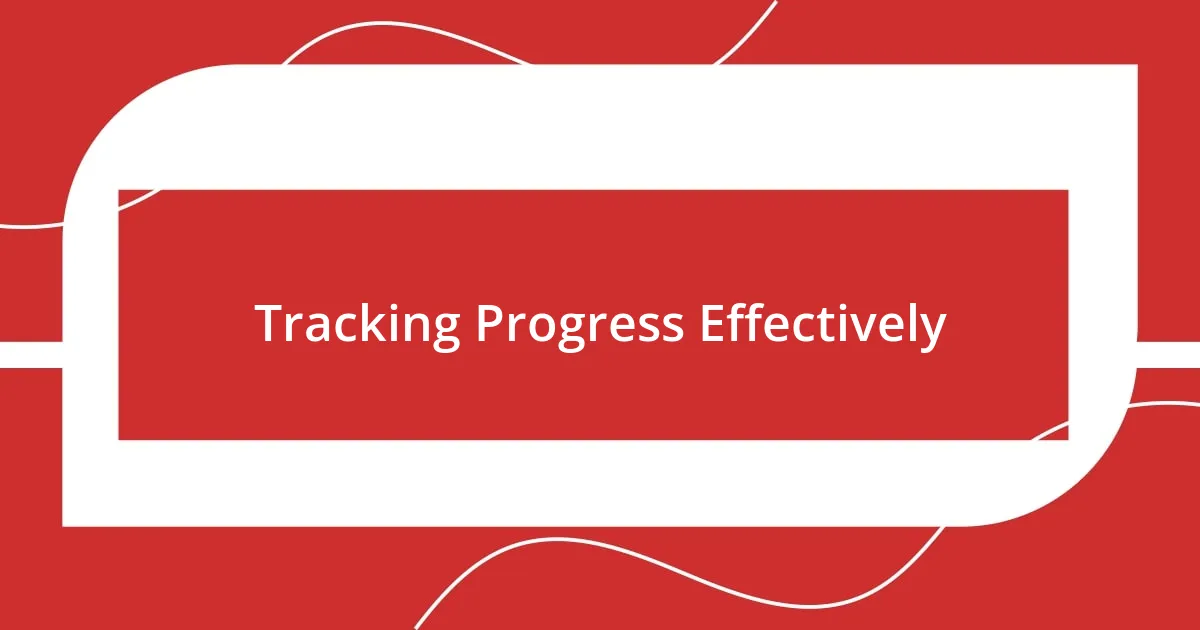Key takeaways:
- Pace reflects personal limits, energy management, and mental focus, essential for endurance activities.
- Setting specific, measurable personal best goals and celebrating small victories can fuel motivation and development.
- Consistent training builds endurance, discipline, and a sense of community, aiding in performance improvement.
- Incorporating mental strategies like visualization, positive thinking, and personal mantras can enhance focus and resilience during races.

Understanding the Concept of Pace
Pace, in the context of running or any endurance activity, refers to the speed at which you complete a certain distance. I remember my first long-distance race, feeling the pressure to keep up with the crowd. It dawned on me then that my pace was not just about matching others; it was about understanding my own limits and capabilities.
When we talk about pace, it’s more than just a number on a watch—it reflects your energy management and mental state during a workout. I often find myself asking, “How can I pair my physical ability with my mental focus to enhance my performance?” For me, pacing has become a vital tool in maintaining resilience throughout a race, allowing me to push through the fatigue while still enjoying the experience.
Moreover, the concept of pace can be deeply personal. I once missed a personal best by seconds; that moment haunted me until I realized it taught me about the patience and strategy required to improve. This realization made my running journey much more rewarding because it’s not just about the finish line; it’s about mastering the rhythm of my own body and mind.

Setting Personal Best Goals
Setting personal best goals can be a transformative aspect of any athlete’s journey. I remember setting a goal for my 5K time after completing numerous races without any real plan. I wrote my desired time on a sticky note and stuck it on my mirror. Each morning, seeing that goal reminded me that my training had purpose and kept me motivated to push harder during workouts.
It’s essential to make these goals specific and measurable. Instead of simply wanting to “run faster,” I focused on shaving off 30 seconds from my previous best. By breaking the goal into smaller milestones, like gradually increasing my pace in training runs, I could track my progress. This approach made the challenge feel less daunting and much more achievable.
Finally, celebrating even the smallest victories can fuel your progress. Each time I hit a personal best, I let myself relish that moment, whether it was a small treat or sharing my success with friends. These little celebrations reinforced my determination and kept my spirits high on tougher training days.
| Type of Goal | Description |
|---|---|
| Short-term | Focus on immediate improvements, like running a specific distance faster. |
| Medium-term | Set goals for races in the next few months, aiming for a personal best time. |
| Long-term | Establish a major goal, like completing a marathon at a certain pace. |

The Importance of Consistent Training
Consistent training is the backbone of any athletic improvement, particularly when it comes to enhancing your pace. I once decided to stick to a training schedule, aiming for three runs a week. Initially, the commitment felt daunting, but over time, those consistent sessions transformed my endurance and confidence. The progress became evident, as each run built upon the last, leading to exhilarating breakthroughs in my pace.
- Regular workouts help strengthen muscles and improve cardiovascular health.
- Consistency fosters a sense of discipline and routine that can lead to mental resilience.
- It allows for gradual adaptations, reducing the risk of injury by accommodating your body’s needs.
- Tracking progress over time can reveal patterns and insights that help refine your strategy.
- Engaging in consistent training creates a community around you, as you share experiences with fellow runners.
Every week I looked forward to my training; it felt like unearthing a treasure chest of improvement. Each step built my foundation, paving the way for personal milestones I once thought unattainable. The joy found in watching my pace gradually drop was not just about the numbers; it was about the journey, the sweat, and the sheer disbelief that I could get faster simply by showing up each week.

Techniques to Improve Running Pace
Finding ways to improve running pace often comes down to technique and focus. One of the most effective methods I discovered was incorporating interval training into my routine. By alternating between bursts of speed and slower recovery periods, I felt my body adapt in remarkable ways. It was thrilling to realize that by pushing myself to sprint just for a minute, I could significantly boost my overall pace during longer runs. Have you ever tried mixing up your training like this? It can be a game-changer.
Form plays a critical role in running efficiently. When I started paying attention to my posture and stride, I was amazed at the difference it made. Simple adjustments, like keeping my arms relaxed and focusing on landing softly on my feet, helped me conserve energy and increase my speed without feeling more fatigued. It’s incredible how small tweaks in technique can lead to performance gains. How often do we overlook these details in our quest for faster times?
Fueling the body appropriately is also key to enhancing running pace. I learned that experimenting with my pre-run meals could dramatically affect my performance. For example, I began to understand which foods provided me with sustained energy versus those that would leave me feeling sluggish. By eating a banana or oatmeal before my runs, I noticed a substantial boost in my speed and endurance. Have you found a specific fuel that works best for you? These elements combined create a holistic approach that not only improves pace but also enriches the running experience itself.

Tracking Progress Effectively
Tracking your progress doesn’t just mean looking at your times; it’s about understanding your journey. I remember the first time I started logging my runs. Each recorded mile felt like a chapter in my personal story. Through this method, I noticed patterns that I otherwise would have overlooked, like how my pace improved after certain types of workouts. Have you ever thought about how tracking can reveal hidden successes? It truly allows you to appreciate your growth in ways that time alone cannot.
Another effective way to track progress is by setting specific, measurable goals. I often find that when I aim for a particular distance or pace within a timeframe, it keeps me motivated. For instance, during one of my training cycles, I decided to focus on achieving a 5K in under 25 minutes. There was something exhilarating about each incremental improvement; I could practically feel the goal pulling me forward. How often do we celebrate the little milestones on our paths? Those small victories not only build momentum but also create a sense of achievement that fuels our passion.
Lastly, incorporating technology into tracking can provide insightful feedback. After I started using a running app, I was captivated by the data it offered. Not just pace and distance, but elevation changes and heart rate as well. One particular run, I was surprised to see that my heart rate was lower than expected even at a faster pace. This allowed me to reassess my training intensity and approach. Have you considered the potential of wearable devices in your running? Sometimes, a little tech can make a big difference in how we understand our performance and pave the way for future improvements.

Mental Strategies for Personal Bests
When it comes to achieving personal bests, I’ve found that visualization can be incredibly powerful. Before a big race, I take a few moments to close my eyes and imagine crossing that finish line – the cheers, the relief, the elation. This mental rehearsal not only calms my nerves but fills me with anticipation, making the goal feel more tangible. Have you ever pictured your success like this? It can transform your mindset and sharpen your focus.
Staying positive, especially during tough moments, is another mental strategy I swear by. There was a tough training day when I felt like giving up, but I reminded myself of all the progress I’d made. Instead of dwelling on the struggle, I shifted my thoughts to the excitement of reaching my next milestone. I’ve learned that a positive mindset can act as fuel, pushing me through the hardest stretches. What do you do to keep your spirits up when the going gets tough? A shift in perspective can be the difference between stepping back and pushing forward.
Lastly, I like to build a mental toolkit with mantras. These short phrases create an inner dialogue that inspires me when fatigue sets in. For instance, during a particularly grueling hill workout, I repeated to myself, “Strength is built with each step.” It’s amazing how that little reminder helped me power through when my legs wanted to quit. Have you tried creating your own motivational phrases? Finding words that resonate with you can empower your run and keep you focused on your goals.

Adapting Training to Personal Needs
Adapting training to personal needs is essential for getting the most out of each session. I remember a time when I struggled with my long runs because I was following a generic training plan that didn’t suit my natural pace. After reflecting on how my body felt during those runs, I adjusted my pace to a more comfortable one. Surprisingly, I found that I could cover greater distances without feeling drained. Have you ever considered how tweaking your approach could unlock your potential?
Sometimes, the key to effective training lies in listening to your body. There was a week where I felt unusually fatigued. Instead of sticking rigidly to my plan, I decided to take an extra rest day. That decision transformed my subsequent runs; I returned feeling recharged and faster than before. It’s easy to overlook our body’s signals when we’re chasing goals, but in my experience, honoring those needs pays off significantly. Have you tried adjusting your training based on your body’s feedback? You might just find yourself hitting new personal bests.
Additionally, I believe that incorporating varied workout styles can cater to individual strengths and weaknesses. For example, I used to dread speed work until I discovered how much I enjoyed interval training. By mixing sprinting with rest, I found the thrill of pushing my limits without the overwhelming pressure of a timed trial. Why not experiment with different types of workouts? You might discover a newfound joy in training, which not only boosts performance but also keeps motivation high.













